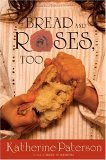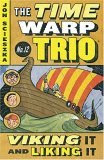 In my post of February 16, (In a Theatre Near You...), I wondered aloud if the film version of A Bridge to Terabithia would live up to the art of the Newbery Award novel. I saw the movie today with my eleven-year-old granddaughter, and the answer is, sadly, no.
In my post of February 16, (In a Theatre Near You...), I wondered aloud if the film version of A Bridge to Terabithia would live up to the art of the Newbery Award novel. I saw the movie today with my eleven-year-old granddaughter, and the answer is, sadly, no.
There is much about the film to like. The actors who portray Jesse Arons and Leslie Burke are very good, and the supporting cast is more than able. The portrayal of Jesse as an artistic but unnoticed middle child, bullied and harried at school, is straightforward and unsentimental, and Leslie is shown as a bright, imaginative, and empathetic newcomer who beats Jesse in a foot race and leads him to the fantasy world of Terebithia as effortlessly as she introduces him to her literary parents.
What seems jarringly wrong about the film is the introduction of computer-generated characters to represent the fantasy foes the children imagine inside Terabithia. Squirrels morph into bizarre chained-draped monsters, and crows become vulture-like harpies which chase and maul Jess and Leslie in the forest. In a segment which made me wince, Jess falls from their embattled tree house and is caught by the giant loamy hand of a tree troll, who places him gently on the earth.
Thinking I might be the only one bothered by these scenes, I looked up some reviews. I'm not. In Ty Burr's review in The Boston Globe he says,
Bridge to Terabithia is an ungainly, sometimes off-putting fusion of rural tweenhood and computer-generated fantasy.
A WalMart Middle Earth.
Jess and Leslie deserve better.
I know. I know. Fantasy action which takes place inside the characters' heads is hard to represent in film. Watching two kids shadow fight with invisible foes doesn't make for exciting movie action. The movie
Chronicles of Narnia set the bar for fantasy spectacle. I
know. Nonetheless, these segments just don't feel right within the flow of the story. As reviewer Melinda Ennis aptly put it, the computer foes "look like rejects from one of Jackson's Hobbit films."
I really hate to knock Walden Media, because they are one of the few film makers who attempt to make movies from quality children's novels such as
Because of Winn-Dixie, Hoot,
Hoot,
and
Holes.
Nonetheless, such novels have strong story lines that need no Hollywood cutesiness, gizmos, or sight gags to sweeten the mix.
But this is a story about two isolated people who connect as friends, and one of them dies. Leslie dies in a sudden and meaningless tragedy, and Jess has to find his way to some peace with himself for not being there, for not keeping the tragedy from happening. In the novel he passes the way into Terabithia on to his little sister Maybelle as a tribute to Leslie, and we know Jess is going to be all right.
If the film had ended that way, I might have seen the CGI elements in the midsection as perhaps an acceptable cinematic device. But it ends as Jess escorts May Belle across the bridge with the earthy troll and the mega-munchkins of Terabithia waving and beckoning, and oh, yeah, crowns popping onto their heads most magically. I'm reminded of the old commercial where the football player scores the winning TD and says, "NOW I'm going to
DISNEYWORLD!!"
It would have been enough if the movie just ended with Jess leading May Belle across the bridge to Terabithia. It would have been enough just to know that the value of imagination and the power of friendship abide.
Maybe if a child hasn't read the book it's worth the price of a ticket to see the main story line, which states this theme admirably.
But, hey, that's just me. I'd like to hear what you all think.
Labels: Bridge to Terabithia (Grades 4-9), The Movie

















